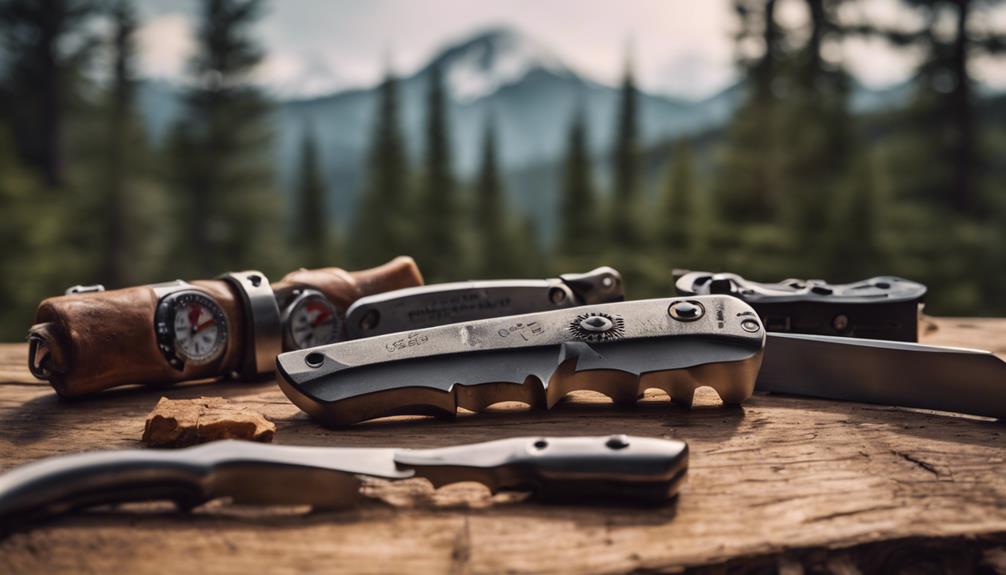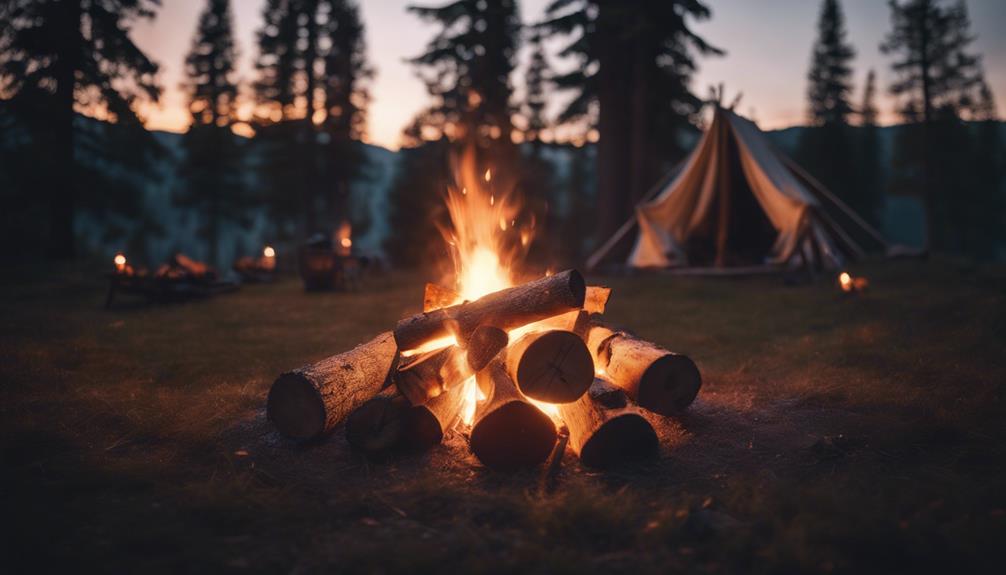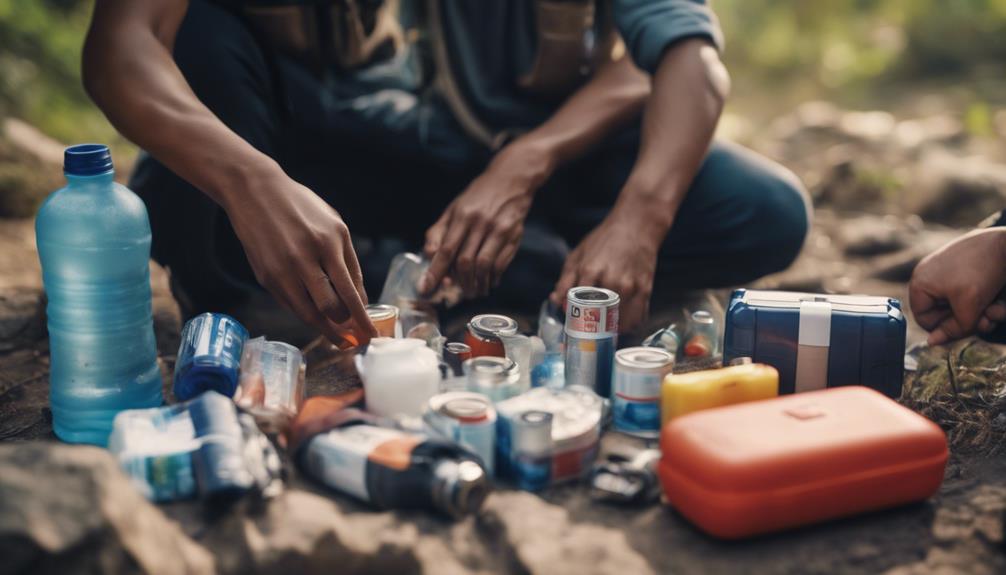Choosing your ultimate survival knife involves considering several key factors. First, identify the primary tasks you will perform, such as cutting or chopping. Opt for a blade made from durable high-carbon steel with full tang construction for strength. Look for an ergonomic handle that offers a non-slip grip. Versatility in blade shape, preferably drop point, is essential for varied tasks. Consider the knife's weight to guarantee comfort during use. Ultimately, select a knife that resonates with you personally, enhancing both reliability and confidence. Explore further to discover additional insights on selecting the ideal survival knife for your needs.
Key Takeaways
- Identify your primary tasks, such as cutting, chopping, or skinning, to guide your selection.
- Opt for a blade made from durable high-carbon steel for better edge retention and performance.
- Ensure the knife has a full tang construction for enhanced strength and balance during use.
- Choose an ergonomic handle with a non-slip grip for comfort and control in various conditions.
Historical Overview of Survival Knives
Survival knives have a rich historical lineage, evolving from ancient utility and combat tools to modern multipurpose instruments essential for emergencies and outdoor activities.
The development of these knives can be traced back to early civilizations, where tools like the seax served both functional and defensive purposes. Over time, various cultures contributed distinctive designs, leading to the emergence of iconic knives such as the Bowie and Kukri.
These knives were not only practical but also became symbolic of their respective regions, often utilized by military forces.
Today, survival knives are available in a wide range of styles and materials, catering to diverse needs, from affordable functional knives to custom blades that reflect personal preferences and historical significance.
Understanding the Bowie Knife
The Bowie knife, with its storied history and practical design, has become an iconic symbol of American craftsmanship and utility in both combat and everyday tasks. Originally designed for close combat, the Bowie knife has evolved into a versatile tool favored by hunters, soldiers, and adventurers alike. Its robust blade and ergonomic handle offer reliability in various situations, from butchering to wood processing.
| Feature | Significance |
|---|---|
| Heritage | Represents American valor |
| Versatility | Suitable for multiple tasks |
| Durability | Built to withstand harsh use |
| Aesthetic Appeal | A symbol of craftsmanship |
The Bowie knife continues to be a trusted companion for those who appreciate its blend of functionality and history.
Exploring the Kukri Knife

Originating from the mountainous regions of Nepal, the Kukri knife is renowned for its distinctive curved blade that excels in a variety of cutting tasks, making it an essential tool for both combat and everyday use.
The Kukri's design allows for powerful chopping, slicing, and stabbing, which has historically made it a favored weapon among Gurkha soldiers.
Beyond its martial applications, it serves as a versatile implement for practical tasks such as wood chopping and butchering.
Available in various forms, from functional tools to high-quality collector's items, the Kukri's effectiveness is complemented by the traditional unsharpened Chakmak and sharpened Karda that often accompany it, enhancing its utility in survival situations.
Essential Characteristics of Survival Knives
A well-designed survival knife must exhibit specific characteristics that enhance its functionality and reliability in various scenarios, building upon the versatile qualities exemplified by the Kukri.
First, the blade should be made from durable, high-carbon steel for maximum edge retention and ease of sharpening. A full tang construction provides strength and balance, essential for demanding tasks.
The handle should feature ergonomic design and a non-slip grip, ensuring control during use. Additionally, a versatile blade shape—preferably a drop point—facilitates various cutting tasks, from slicing to chopping.
Practical Applications in Survival Situations

Utilizing a survival knife effectively can be essential in various emergency scenarios, providing fundamental capabilities for tasks such as shelter building, food preparation, and self-defense.
In survival situations, the ability to craft a shelter quickly is imperative; a sturdy knife can cut branches and shape materials.
For food preparation, a sharp blade is important for skinning, filleting, and cooking, ensuring proper sustenance.
Additionally, in self-defense scenarios, a well-designed knife can provide protection against threats, enhancing personal safety.
Beyond these primary functions, survival knives can also aid in fire-starting, cord cutting, and tool-making, showcasing their versatility.
Ultimately, choosing a reliable survival knife can greatly influence the outcome of emergency situations, reinforcing the need for thoughtful selection and preparedness.
Personal Connection to Your Knife
Establishing a strong personal connection to your knife can greatly enhance both confidence and effectiveness in survival situations. This connection often stems from the knife's design, functionality, and the experiences shared with it.
A knife that feels comfortable in hand and aligns with your individual needs fosters a sense of reliability. When a user resonates with their knife's history or craftsmanship, it transforms into more than just a tool; it becomes a trusted companion.
This emotional bond aids in overcoming challenges, as the user is more likely to trust their instincts and the knife's capabilities. Ultimately, selecting a knife that reflects personal values and preferences can markedly optimize performance in critical moments.
Tips for Choosing the Right Knife

When selecting the right survival knife, it is essential to take into account factors such as intended use, blade material, and ergonomic design to guarantee peak performance in various situations.
First, determine the primary tasks your knife will perform, whether cutting, chopping, or skinning.
Choose a blade material that balances durability and corrosion resistance; high-carbon steel offers excellent edge retention, while stainless steel is more resistant to rust.
Additionally, consider the knife's weight and handle design for a comfortable, secure grip during prolonged use. A full-tang blade design enhances strength and stability, making it more reliable.
Frequently Asked Questions
What Materials Should I Look for in a Survival Knife Blade?
When selecting a survival knife blade, prioritize materials such as high-carbon stainless steel for durability and edge retention, or tool steel for strength. Consider weight, corrosion resistance, and ease of sharpening to guarantee peak performance.
How Do I Properly Maintain My Survival Knife?
Like a seasoned warrior sharpening their blade beneath the twilight sky, proper maintenance of your survival knife involves regular cleaning, honing the edge, and ensuring a rust-free surface, fostering both longevity and reliability for every endeavor.
Can I Use a Survival Knife for Bushcrafting?
Yes, a survival knife can effectively be used for bushcrafting tasks. Its versatility allows for various functions such as carving, wood processing, and shelter construction, making it an essential tool for outdoor skills and survival scenarios. In addition to these fundamental tasks, a survival knife is also useful for more specialized skills like preparing food or crafting traps for small game. For example, it can aid in preparing equipment for twig fishing techniques, where small twigs or branches are used to create makeshift fishing tools. Overall, the adaptability of a survival knife makes it indispensable for anyone engaging in wilderness activities.
What Is the Best Way to Carry a Survival Knife?
Like a trusted companion, a survival knife should be securely carried on your person, utilizing sheath, belt clip, or harness. This guarantees accessibility while safeguarding against accidental injury, allowing for seamless deployment in critical situations.
Are There Legal Restrictions on Carrying Survival Knives?
Legal restrictions on carrying survival knives vary by jurisdiction, encompassing factors such as blade length, type, and intended use. It is imperative to research local laws to guarantee compliance and avoid potential legal issues.
Conclusion
In the quest for the ultimate survival knife, a harmonious blend of history, function, and personal resonance emerges as paramount.
The legacy of iconic designs, such as the Bowie and Kukri, dances through time, illustrating their enduring significance.
Essential characteristics and practical applications weave a tapestry of utility, while personal connections transform mere tools into trusted allies.
Ultimately, the right knife stands not only as a blade but as a symbol of resilience, ready to forge paths through the wilderness of uncertainty.










